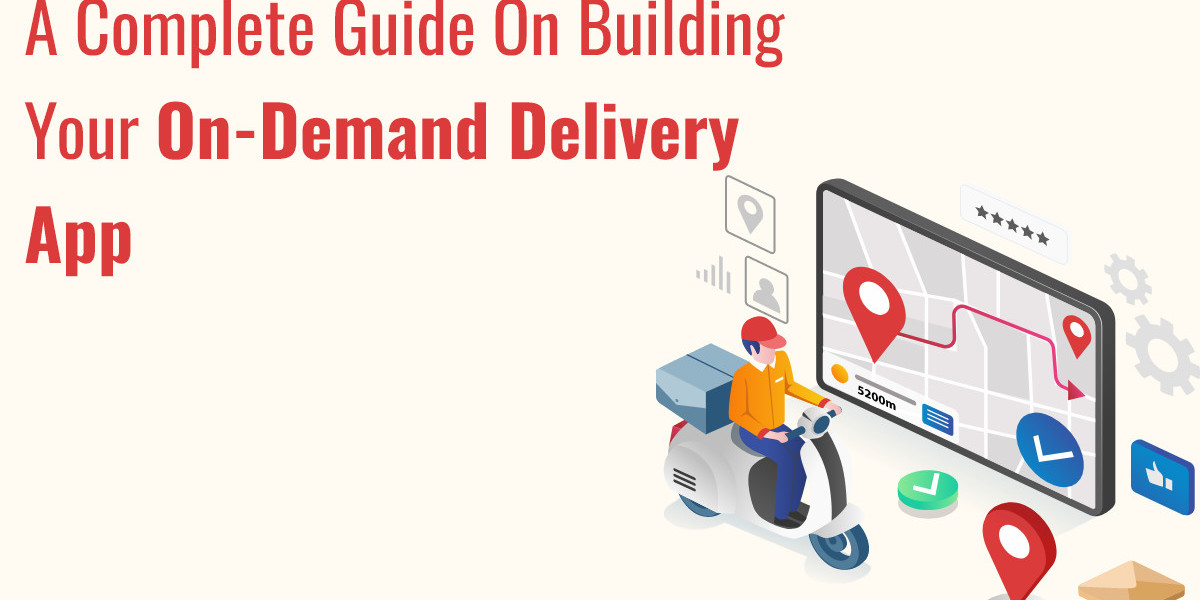In today's fast-paced world, on-demand delivery apps have revolutionized the way we shop and receive goods. Whether it's food, groceries, or even services, these apps have made life significantly more convenient. If you're looking to build your own on-demand delivery app, this comprehensive guide will walk you through the essential steps to ensure your app's success.
Understanding the On-Demand Delivery App Market
Market Research and Analysis
Before diving into development, it's crucial to understand the market you're entering. Conduct thorough market research to identify your target audience, their needs, and preferences. Analyze your competitors to understand what works and what doesn't. This information will help you tailor your app to meet market demands.
Identifying Your Niche
The on-demand delivery market is vast, covering various niches like food delivery, grocery delivery, parcel delivery, and more. Identify the niche you want to focus on. This decision should be based on market demand and your unique value proposition.
Planning Your On-Demand Delivery App
Defining Your Value Proposition
Your value proposition is what sets your app apart from competitors. It could be faster delivery times, lower costs, superior customer service, or unique features. Clearly define your value proposition and ensure it resonates with your target audience.
Setting Clear Goals
Outline clear, measurable goals for your app. These could include user acquisition targets, delivery times, revenue goals, and customer satisfaction levels. Having well-defined goals will guide your development process and marketing strategies.
Creating a Detailed Business Plan
A solid business plan is essential for the success of your app. It should cover your value proposition, target audience, marketing strategies, revenue model, and financial projections. This plan will serve as a roadmap for your development and operational strategies.
Designing Your On-Demand Delivery App
User Experience (UX) Design
A seamless and intuitive user experience is critical for the success of your app. Focus on creating a user-friendly interface with easy navigation. Ensure that users can easily search for products, place orders, and track deliveries.
User Interface (UI) Design
The visual design of your app should be appealing and align with your brand identity. Use consistent colors, fonts, and imagery to create a cohesive look. Prioritize a clean, uncluttered design that enhances usability.
Key Features to Include
User Registration and Profile Management
Allow users to easily register and manage their profiles. Provide options for social media logins to simplify the registration process.
Product Search and Filtering
Implement robust search and filtering options to help users quickly find what they're looking for. Include filters for categories, price ranges, and ratings.
Order Placement and Payment Options
Simplify the order placement process with a clear and intuitive checkout flow. Offer multiple payment options, including credit/debit cards, digital wallets, and cash on delivery.
Real-Time Order Tracking
Provide real-time order tracking to keep users informed about their delivery status. This feature enhances transparency and improves user satisfaction.
Ratings and Reviews
Allow users to rate and review products and services. This feedback is valuable for improving your offerings and building trust with your audience.
Customer Support
Include a robust customer support system, with options for chat, email, and phone support. Quick and effective customer service is crucial for retaining users.
Developing Your On-Demand Delivery App
Choosing the Right Technology Stack
Select a technology stack that aligns with your app's requirements. Popular choices for on-demand delivery apps include React Native, Flutter, and Swift for mobile development, and Node.js, Python, or Ruby on Rails for backend development.
Partnering with a Development Team
Unless you have in-house expertise, partnering with an experienced development team is advisable. Look for a team with a proven track record in developing on-demand delivery apps. They can provide valuable insights and ensure your app meets industry standards.
Development Phases
MVP Development
Start with a Minimum Viable Product (MVP) that includes the core features of your app. This allows you to launch quickly, gather user feedback, and make necessary improvements.
Full-Scale Development
Based on the feedback from your MVP, proceed with full-scale development. Add advanced features, optimize performance, and ensure the app is scalable.
Testing and Quality Assurance
Rigorous testing is essential to ensure your app is bug-free and functions smoothly. Conduct various types of testing, including unit testing, integration testing, and user acceptance testing. Address any issues promptly to deliver a high-quality product.
Launching and Marketing Your On-Demand Delivery App
Pre-Launch Marketing
Build anticipation for your app with pre-launch marketing strategies. Use social media, email marketing, and influencers to create buzz. Offer early access or discounts to attract initial users.
App Store Optimization (ASO)
Optimize your app store listings with relevant keywords, compelling descriptions, and high-quality screenshots. Positive reviews and ratings also play a crucial role in improving your app's visibility.
Post-Launch Marketing
After the launch, continue promoting your app through various channels. Use social media ads, content marketing, and partnerships to reach a broader audience. Monitor user feedback and make continuous improvements.
Managing and Scaling Your On-Demand Delivery App
Analyzing User Data
Use analytics tools to track user behavior and gather insights. Analyze data to understand user preferences, identify trends, and make data-driven decisions.
Continuous Improvement
Regularly update your app with new features, performance enhancements, and bug fixes. Listen to user feedback and make improvements to keep your app relevant and competitive.
Scaling Your Operations
As your user base grows, ensure your infrastructure can handle increased demand. Optimize your delivery processes, expand your delivery areas, and consider partnerships to enhance your capabilities.
Conclusion
Building a successful on-demand delivery app requires careful planning, thorough market research, and a user-centric approach. By following the steps outlined in this guide, you can develop an app that meets market demands, provides a seamless user experience, and stands out in the competitive on-demand delivery market. Discover the ultimate guide on building your on-demand delivery app. Learn key strategies, essential features, and expert tips from a leading on-demand app development company to create a successful and user-friendly app that stands out in the competitive market. Remember, the key to success lies in continuous improvement and adapting to evolving user needs. With dedication and the right strategies, your on-demand delivery app can achieve long-term success.















